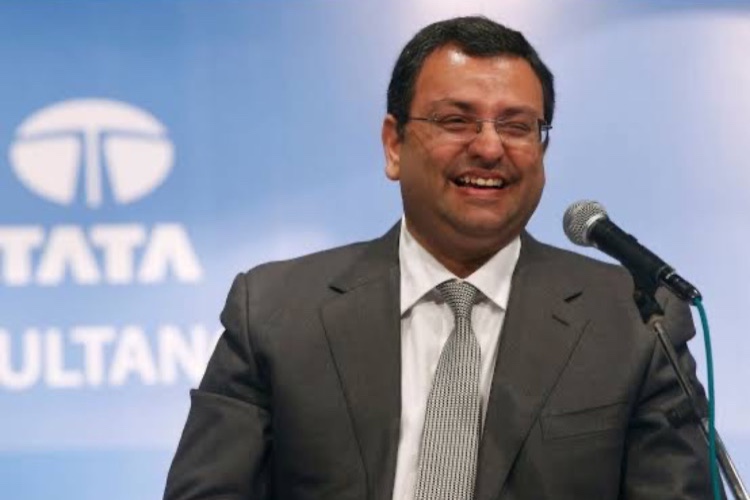
 Sushma Ramachandran
Sushma Ramachandran
The tragic and untimely death of Cyrus Mistry has put the spotlight once again on his tenure as chairman of Tata Sons and his contentious relationship between the top management of this venerable industrial house. As tributes have been pouring in for him from all segments of society, much of the good work that he did for the house of Tatas is now being made public. When the strife began, Mistry suffered from having always kept a low public profile.
As a result, his side of the story was not aired sufficiently in public discourse. The Tatas with their long-standing relationship with the media and effective public relations were able to project their version of the corporate battle more sharply.
To give the backdrop, one must recall that Cyrus Pallonji Mistry belonged to the well-known Shapoorji Pallonji family that has been in the construction business for well over a century. Ties between them and the Tatas began several decades ago when his grandfather, Shapoorji Pallonji bought 12.5 percent equity shares in the Tata Sons group in the 1930s from the estate of F.E Dinshaw.
He had been an advisor and lender of the Tata family. This shareholding rose to 17.5 percent as JRD Tata’s siblings also sold equity shares to the SP group. Currently, the SP group holding has risen to 18.37 percent owing to a rights issue in the 1990s.
The relationship between the Tatas and the SP family was cordial in the past. It was probably this as well as an appreciation of his management expertise that made Ratan Tata appoint Cyrus Mistry as the was the second non-Tata chairman of Tata Sons(the first was Saklatwala in the 1930s) 2012. But just four years later, he was unceremoniously removed from his post.
It was then that Mistry filed a complaint with the National Company Law Tribunal and then the appellate tribunal, alleging mismanagement by Tata Sons. Later in February 2017, he was also removed from the board of the company. Ultimately the Supreme Court ruled in 2021 that Mistry’s removal from the Tatas was legal. It also upheld Tata Sons' minority shareholder rights rules.
As for the reasons behind his ouster, some observers say it was due to his opposition to some of Ratan Tata’s pet projects. The costly decisions to acquire Jaguar Land Rover or the initiative to launch the Nano car are two such instances. He was also opposed to Tatas' entry into the high-risk and heavily capital-intensive aviation industry. He was also not in favour of the loss-making telecom services ventures and ensured that the group exited them. In the process, however, he attracted criticism for not honouring the financial obligation to a Japanese investor and the case ended up in international arbitration. As far as the Corus acquisition was concerned, he was not happy with the expensive purchase of the company for a whopping 12 billion dollars in 2007 and managed to sell it off during his tenure.
His positive initiatives include reviving the fortunes of Tata Motors and investing in new products, efforts which are bearing fruit now. Insiders told the media that he laid the foundation for the next level of growth in the Tata group. It is also reported that his tenure saw a 100 percent rise in patent filings which ended up increasing the company’s brand value by 5 billion dollars.
It was over this same period, that Tata Power acquired Welspun’s renewable s energy business for Rs. 10000 crores, enabling the company to shift towards a sunrise sector. After the famous boardroom battle with Tatas, Mistry put his focus on the SP group which is reported to have a net worth of 30 billion dollars. The group’s interests are largely in the engineering and construction sector with many iconic buildings having been built by it. These include the RBI headquarters, the Oberoi Hotel in Mumbai, and the Jawaharlal Nehru Stadium.
Now is an apt time to review and reassess the extraordinary situation in which the Tata Sons board voted out a chairman in a snap decision. It was a boardroom coup where Mistry had been given no opportunity to present his point of view to the board members. Instead, the members relied on their old loyalty to Ratan Tata for taking a decision that was arbitrary and not in line with the principles of good corporate governance.
On the legal front, the Supreme Court ruled in favour of Tatas on Mistry’s removal as the Chairman. All legally correct measures were taken by the company. At the same time, it would have been in the fitness of things and line with the reputation of integrity so dear to the Tatas, that not just the letter of the law but the spirit of it had been followed.
Even if there were differences between the patriarch Ratan Tata and the young new incumbent, efforts needed to have been made to reach some kind of a meeting ground and that should not have been so difficult given that these are probably the two tallest Parsi families in the country and there are bound to have been made potential intermediaries.
The dismissal too could have been converted into resignation by such negotiations. If not, at least the incumbent should have been given chance to present his version of events.
ALSO READ: India needs to be atmanirbhar in oil seeds, pulses
The entire Cyrus Mistry- Ratan Tata saga has thus not projected India Inc in a positive light. The fact that the bitterness runs deep is evident from the fact that even on Mistry’s demise there has been no public statement from the elder industrialist. While the events may have played out a while ago, all that happened in the Mistry case needs to be considered by the rest of corporate India as a salutary lesson on the need to ensure a better quality of governance for the future.
